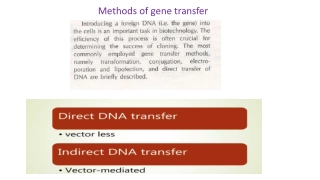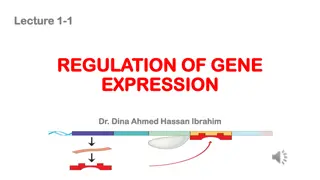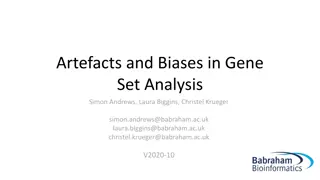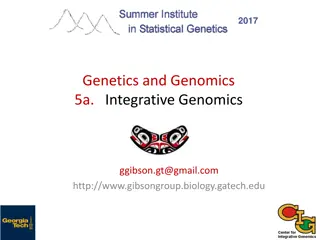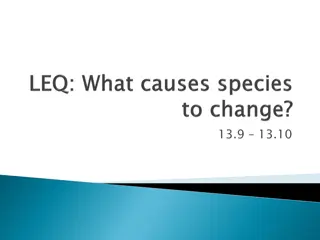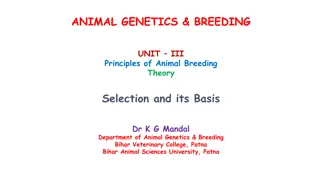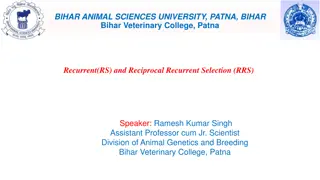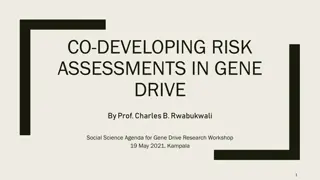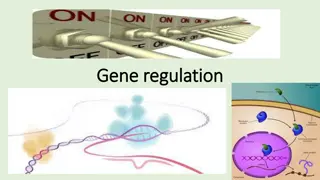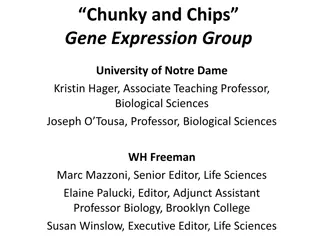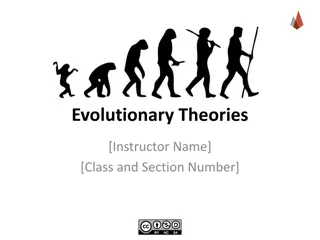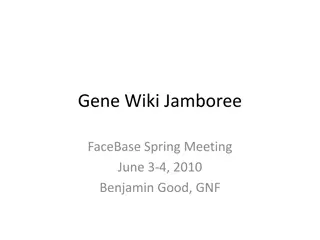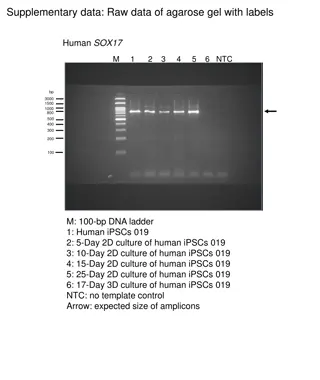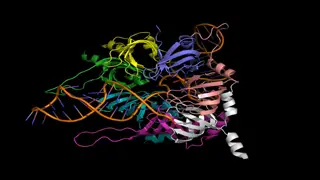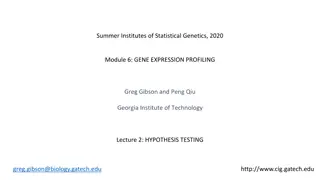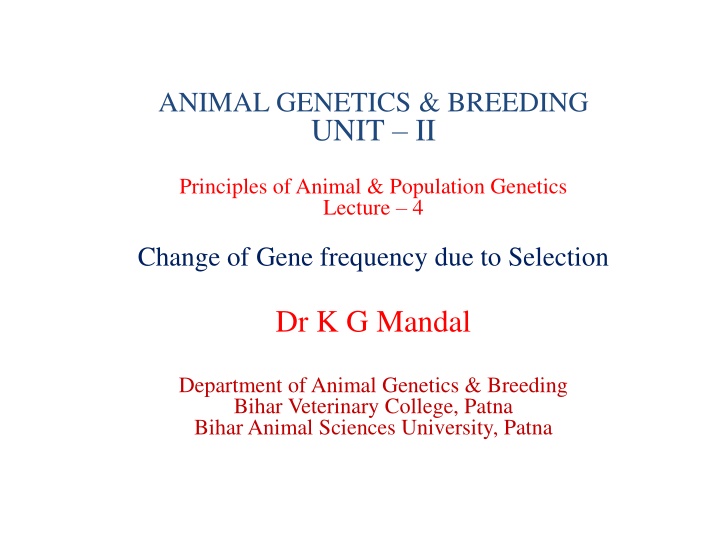
Selection and Gene Frequency Change in Animal Genetics
Explore the principles of animal and population genetics related to gene frequency changes due to selection. Learn about fitness, coefficient of selection, and the impact of selection on gene frequencies within populations.
Download Presentation

Please find below an Image/Link to download the presentation.
The content on the website is provided AS IS for your information and personal use only. It may not be sold, licensed, or shared on other websites without obtaining consent from the author. If you encounter any issues during the download, it is possible that the publisher has removed the file from their server.
You are allowed to download the files provided on this website for personal or commercial use, subject to the condition that they are used lawfully. All files are the property of their respective owners.
The content on the website is provided AS IS for your information and personal use only. It may not be sold, licensed, or shared on other websites without obtaining consent from the author.
E N D
Presentation Transcript
ANIMAL GENETICS & BREEDING UNIT II Principles of Animal & Population Genetics Lecture 4 Change of Gene frequency due to Selection Dr K G Mandal Department of Animal Genetics & Breeding Bihar Veterinary College, Patna Bihar Animal Sciences University, Patna
Change of gene frequency due to selection According to I.M. Lerner: Selection is the non-random differential reproduction of genotypes. According to J.L. Lush: Selection is the difference in reproduction rates within a population whereby some individuals tend to have more offspring than the other animals. Individuals differ in viability and fertility. They contribute different number offspring generation to the next
Fitness:- Contribution of offspring to the next generation is known as fitness of an individual. It is also known as adaptive value or selective value. If the differences of fitness are in any way associated with the presence or absence of a particular gene then selection operates on that gene. When a gene is subject to selection its frequency in the offspring will not remain same as in parents.
Selection is a major force to cause the change of gene frequency. Selection changes gene frequencies due to differences in fitness of the genotype that is individuals. When all the genotypes are equally fit, the population remains Equilibrium. in Hardy-Wienberg
Coefficient of selection:- gametic contribution comparison to the standard genotype is known as coefficient of selection. Proportionate reduction in particular of a genotype in The standard genotype means it is the most forward genotype which contributes highest number offspring to the next generation. The coefficient of selection is also known as strength of selection or Intensity of selection. It is denoted as s .
The gametic contribution of the standard genotype is taken to be 1, then the contribution of the genotype selection operating against that genotype is then 1-s. This express the fitness of a genotype in respect to the standard genotype. If coefficient of selection s of an individual is 0.1, then its fitness = 1 0.1 = 0.9 or 90%.
Degree of dominance: Dominance with respect to fitness. Considering a locus with two alleles A1and A2the different degrees of dominance with respect to fitness are as follows: No dominance A2A2 1-S 1- s 1 Complete dominance A2A2 1-s 1 Over dominance A2A2 A1A1 1-s2 1- s1 A1A2 A1A1 A1A1, A1A2 A1A2 1
Change of gene frequency due to selection under complete dominance and selection operates against a recessive genotypes. Genotype A1A2 A2A2 2pq 0 1 2pq Particulars A1A1 p2 0 1 p2 Total 1 Initial frequencies Coefficient of selection Fitness Gametic contribution q2 s 1-s q2(1-s) 1-sq2 Total gametic contribution = 1-sq2 Change of gene frequency, q = sq2(1-q)/1-sq2 Conclusion: The effect of selection on gene frequency depends not only on the intensity of selection, s but also on the initial gene frequency.
The total gametic contribution (new total) = p2+2pq+q2(1-s) = p2+2pq+q2-sq2 = 1-sq2 The new gene frequency ofA2 gene is q1 = [q2 (1-s) + (2pq)] / 1 sq2 = [q2 sq2 + pq] / 1 sq2 = [q2 sq2 + (1 q)q] / 1-sq2 = [q2 sq2 + q q2] / 1-sq2 = [q-sq2] / 1-sq2
The change of gene frequency resulting from one generation of selection is q = q1-q By subtituting the value of q1, q = [q-sq2] / [1-sq2] q = [q-sq2-q(1-sq2)] / 1-sq2 = [q-sq2-q+sq3] / 1-sq2 = [sq3-sq2] / 1-sq2 = - [sq2 (1-q)] / 1-sq2 Conclusion: 1.the effect of selection on gene frequency depends not only on the intensity of selection s but also on the initial gene frequency 2. The negative sign indicates that the frequency of A2 gene has decreasing trend.
Dispersive Process: The process by which the change of gene frequency in a small population can be predicted only in amount but not the direction. 1. Random drift: The random change of gene frequency due to sampling is known as random drift. 2. Genetic drift: Random drift is also known as genetic drift. 3. The change of gene frequency in a small population is erratic in manner from generation to generation with no tendency to revert to its original value. For this reason, the random drift is known as genetic drift.

